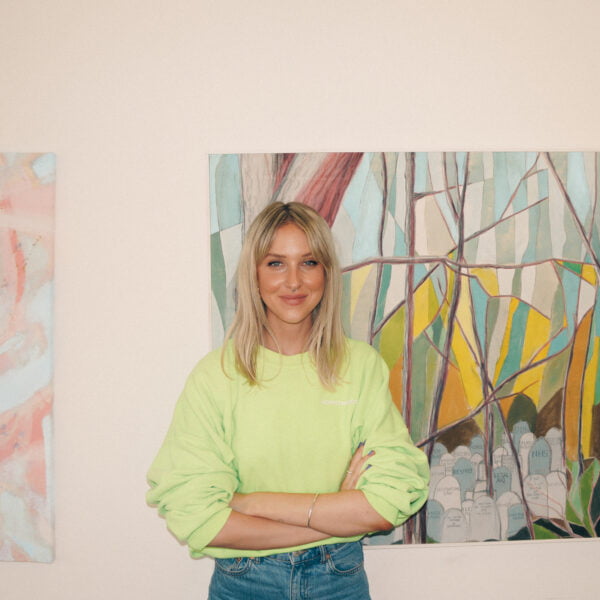
Natasha Collie
Senior Brand Marketing Manager at Penguin Random House UK
At the start of the year, Ladybird Books approached Sonder & Tell with a dream brief. In 2021, a year that’s been particularly challenging for...
In conversation with
Food Writer, Editor, founder of At The Table

Once upon a time, food writing was either a dry review from an ageing critic or a recipe citing a list of instructions. Now, our connection to food – and the stories it tells – has grown, transforming food writing into a vibrant and colourful landscape.
Miranda York, a writer, editor and founder of creative food platform At The Table, is a champion of this movement. At The Table explores and celebrates British food culture, providing an online and offline space for writers, readers, cooks and eaters alike to devour stories about food with a fresh perspective.
Her advice for aspiring food writers? “Drawing inspiration from your own experiences can elevate a piece but it’s far too easy to romanticise food memories. Remember that food has a darker side – it’s not just madeleine moments”
With her own debut food compendium, The Food Almanac, out in October, we spoke to Miranda about her appetite for good food stories.
I worked at an indie food magazine when I first left university and it unexpectedly drew me into the food world. But it wasn’t until I launched my own company in 2013 that I started to delve deeper, exploring the stories around food and looking at the subject through a cultural prism.
At The Table is a creative platform that explores and celebrates food culture. We’re interested in the stories, ideas and people behind what we eat and drink, exploring the gastronomic world through events, print, digital and film. By bringing people together from different industries and backgrounds – chefs, producers, writers, historians, scientists, artists, filmmakers – we aim to look at food from a fresh perspective.


I love the eclectic mix of stories and how open we are to how those stories are told, whether it’s a historical piece, memoir, short story, poem or photo essay. In issue two, there’s a beautiful short story about love and loss and Caribbean Christmas cake by novelist Kit de Waal next to a piece on elaborate ice cream sundaes in English seaside towns. Diana Henry rhapsodises about her love of menus, Rachel Roddy explores the connections between the honest northern food she knew as a girl and the gutsy cooking she discovered in her adopted city of Rome, and Alexander Lobrano recalls the British food he came to love as a hungry American student in 1970s London. Online you’ll find a piece about Wetherspoons by Irish writer Megan Nolan, a short story about intimacy, desire and revulsion by novelist Jessica Andrews, and a poem about growing up in two worlds by Nigerian poet Yomi Sode. Nothing is off limits.
It’s about connection. There’s something almost magical about gathering people together to share food and stories. Food can be a banal, everyday necessity, but it can also inspire and bring people together. Our happiest moments are often created sitting round a table, sharing food and stories with people we love, people we admire, or even people we’ve just met.
London is full of competing stories and the food scene can feel like a crowded space. How do you sift through the noise and find the important ones?
When I first started the company, it was about telling the stories that mainstream media wasn’t interested in. That’s changed a little. Food has become fashionable and you can read brilliant food writing in the most unlikely of places. For me, it starts with great writing. A good writer can write about anything. I often commission writers from other disciplines so as to step outside the food media bubble, and I rarely commission from pitches. Instead I approach a writer I admire, talk to them, find out their quirks and obsessions, then give them the freedom to write in their own style and edit with a light touch.
“Drawing inspiration from your own experiences can elevate a piece but it’s far too easy to romanticise food memories. Remember that food has a darker side – it’s not just madeleine moments.”
By connecting food to the world around us, not just talking about what’s on the plate.
Explore beyond food, find deeper connections and most importantly, tell a story. Perhaps the last point sounds obvious, but it’s far too easy to forget when writing about food, a subject that seems to encourage people to skim along the surface of an issue. Make sure the piece has a thread running through that gets tied up in a neat knot at the end. Drawing inspiration from your own experiences can elevate a piece but it’s far too easy to romanticise food memories. Remember that food has a darker side – it’s not just madeleine moments.

I often look to the great food writers of the past, in particular Jane Grigson, MFK Fisher, Richard Olney, Elizabeth David and Margaret Costa, their wise and witty words a constant companion as I write. I admire their attitude to cooking and eating, their appetite for both food and knowledge. They have written books to live with and learn from, books to keep among the pots and pans, or scatter across the kitchen table, well-thumbed and reassuringly familiar. The American novelist Laurie Colwin, who also turned her talents to food, wrote: “No one who cooks, cooks alone. Even at her most solitary, a cook in the kitchen is surrounded by generations of cooks past.”
Diana Henry’s How to Eat a Peach. It’s perfect. It’s a book of menus and recipes drawing inspiration from Diana’s life and travels, and a reminder that food can transport you to anywhere in the world. Plus it has a fuzzy cover.

Senior Brand Marketing Manager at Penguin Random House UK
At the start of the year, Ladybird Books approached Sonder & Tell with a dream brief. In 2021, a year that’s been particularly challenging for...

Founder Of Simple Politics
Talking about serious issues doesn’t mean defaulting into a serious tone of voice, or using complicated language. If anything, accessibility, clarity and a touch of...

Brand & Community Manager at Homethings
Creating a tone of voice from scratch can be challenging. But a blank slate to work from also mean there’s room for something a bit...

Community Brand Manager at Finisterre

Writer & Founder of The Pound Project